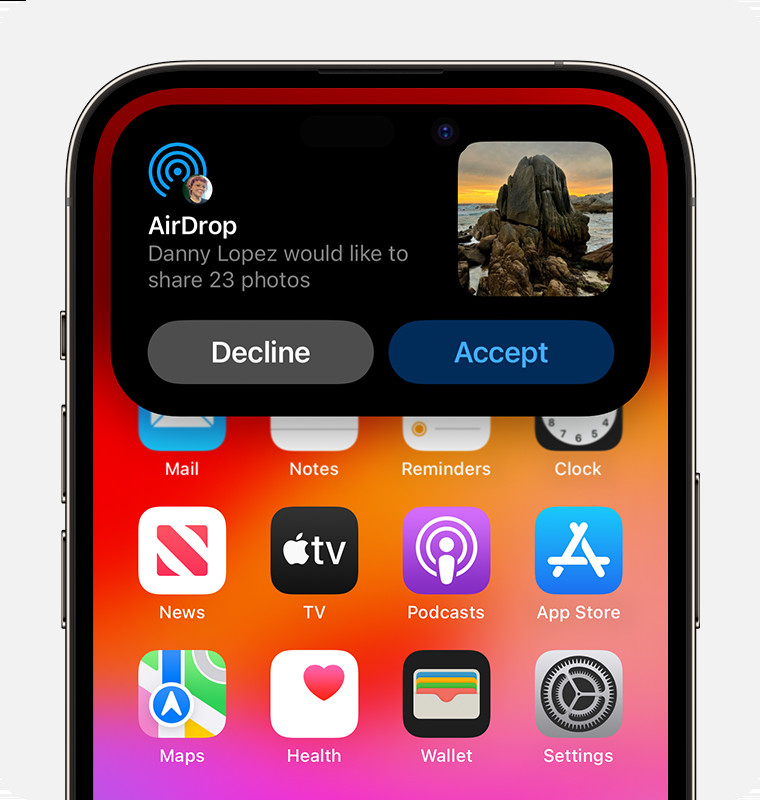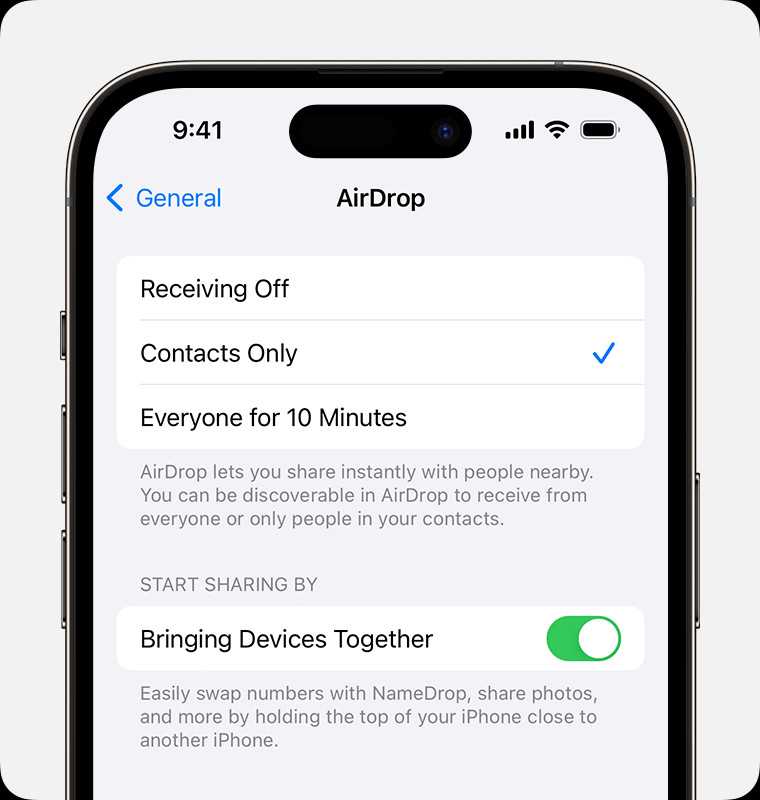AirDrop is an incredibly useful feature for iPhone users, especially photographers, allowing you to seamlessly share photos and other files with nearby Apple devices. Whether you’re transferring photos to a friend’s iPhone, sending your latest shots to your iPad for editing, or quickly backing up images to your Mac, AirDrop simplifies the process. This guide will walk you through everything you need to know about how to AirDrop photos on your iPhone, ensuring you can share your visual creations effortlessly.
Before You Start AirDropping Photos
To ensure a smooth AirDrop experience, there are a few preliminary checks to perform on both your device and the recipient’s device:
- Proximity and Range: AirDrop relies on Bluetooth and Wi-Fi to establish a connection. Make sure that both iPhones are physically close to each other, ideally within a few feet, and within Bluetooth and Wi-Fi range.
- Wi-Fi and Bluetooth Status: Verify that both iPhones have Wi-Fi and Bluetooth turned on. These are essential for AirDrop to function correctly. If either device has Personal Hotspot activated, it needs to be turned off as it can interfere with AirDrop.
- AirDrop Receiving Settings: The recipient’s AirDrop settings determine who can discover their device. If their AirDrop is set to “Contacts Only,” and you are in their contacts, they must have your Apple ID email address or phone number saved in your contact card for AirDrop to work.
- “Everyone” Setting for First-Time Transfers: If you are not in the recipient’s contacts, or for a hassle-free first-time transfer, advise them to temporarily set their AirDrop receiving setting to “Everyone.” This allows their device to be discoverable by all nearby Apple devices for a limited time, making the photo sharing process straightforward. They can always revert to “Contacts Only” or “Receiving Off” afterward for privacy.
You can adjust your AirDrop receiving settings to “Contacts Only” or “Receiving Off” at any time to control who can see your device and send you content via AirDrop, enhancing your privacy and security.
Steps to AirDrop Photos from Your iPhone
Once you’ve confirmed the prerequisites, sending photos via AirDrop is a breeze. Follow these simple steps:
-
Open the Photos App and Select Photos: Launch the Photos app on your iPhone and navigate to the photos you wish to share. You can select single or multiple photos. For multiple photos, tap “Select” in the top right corner and then tap on each photo you want to AirDrop.
-
Tap the Share Button: After selecting your photos, look for the Share button (it’s the square icon with an upward arrow, typically found at the bottom left of the screen). Tap the Share button to bring up the share sheet.
-
Choose AirDrop: On the share sheet, you will see various sharing options. Look for the AirDrop icon. It usually appears in the second row of icons. Tap the “AirDrop” button.
 An iPhone showing the share sheet with photos selected and the AirDrop option displayed.
An iPhone showing the share sheet with photos selected and the AirDrop option displayed. -
Select the AirDrop Recipient: After tapping AirDrop, your iPhone will start searching for nearby AirDrop-enabled devices. You will see a list of available AirDrop users. Tap on the name or icon of the person you want to share your photos with. If the person is in your Contacts, you will likely see their contact photo alongside their name. If they are not in your contacts, you will see just their name. You can also use AirDrop to send photos between your own Apple devices if they are nearby.
For users with iOS 17, there’s an even quicker method: if you are physically near someone in your Contacts, you can simply open the content you want to share and bring your iPhones close together. This initiates the AirDrop transfer seamlessly.
Accepting AirDropped Photos on Your iPhone
When someone AirDrops photos or other content to you, your iPhone will display an alert notification. Here’s how to accept the incoming AirDrop:
-
AirDrop Alert: When an AirDrop is initiated towards your iPhone, an alert will pop up on your screen, showing a preview of the content being sent and offering two options: “Accept” or “Decline.”
-
Tap “Accept”: To receive the photos, simply tap the “Accept” button. The photos will then be transferred to your iPhone.
 An iPhone showing an AirDrop alert that you can decline or accept.
An iPhone showing an AirDrop alert that you can decline or accept. -
Location of Received Photos: For photos, once you tap “Accept,” they will automatically be saved to your Photos app, appearing in your Camera Roll or the specific album from which they were originally sent. For other types of files, they will typically open in the corresponding app. For instance, web links will open in Safari.
If you AirDrop photos to yourself, for example, from your iPhone to your iPad or Mac (using the same Apple ID on both devices), the transfer will happen automatically without requiring you to tap “Accept.” The photos will seamlessly appear on your other device.
Managing Your AirDrop Settings on iPhone
Customizing your AirDrop settings is crucial for controlling device discoverability and managing who can send you content. You can adjust these settings through two methods: the Settings app and Control Center.
Method 1: Via Settings App
-
Open Settings: Launch the Settings app on your iPhone from your home screen.
-
Tap “General”: In the Settings menu, scroll down and tap on “General.”
-
Select “AirDrop”: Within the General settings, find and tap on “AirDrop.”
-
Choose Your Preference: You will see three options:
- Receiving Off: This disables AirDrop, and you will not receive any AirDrop requests.
- Contacts Only: Only people in your Contacts list who have an Apple ID associated with their contact card can see your device and AirDrop to you.
- Everyone: All nearby Apple devices using AirDrop can see your device and send you content. In iOS 16.2 and later, when you choose “Everyone,” it defaults to “Everyone for 10 Minutes,” after which it automatically reverts to “Contacts Only” for enhanced security.
 An iPhone showing AirDrop settings with Contacts Only selected.
An iPhone showing AirDrop settings with Contacts Only selected.
Method 2: Via Control Center
Control Center offers a quick way to access and change your AirDrop settings:
- Open Control Center:
- On iPhone X and later models: Swipe down from the upper-right corner of your screen.
- On iPhone 8 and earlier models: Swipe up from the bottom of the screen.
- Access Network Settings: In the Control Center, locate the network settings card (usually in the upper-left corner), which includes icons for Airplane Mode, Cellular Data, Wi-Fi, and Bluetooth. Press firmly or touch and hold this card to expand it.
- Touch and Hold AirDrop Button: In the expanded network settings, find the AirDrop button. Touch and hold the AirDrop button to reveal the AirDrop options: “Receiving Off,” “Contacts Only,” and “Everyone.”
- Select Your Option: Tap on your desired AirDrop receiving option. The selected option will be highlighted, and your AirDrop setting will be updated immediately.
If you find that the AirDrop option is set to “Receiving Off” and you are unable to change it, it might be due to Screen Time restrictions. To resolve this:
- Go to Settings > Screen Time.
- Tap “Content & Privacy Restrictions.”
- Tap “Allowed Apps” and ensure that “AirDrop” is toggled on.
By mastering AirDrop, you can significantly enhance your photo sharing workflow on your iPhone, making it quick, convenient, and efficient to transfer your images between devices and share them with others.

